The Vendée Globe is a prestigious solo, non-stop, round-the-world sailing race that has captured the imagination of sailors and fans alike since its inception. Let’s delve into its history, objectives, and frequency, as well as provide some information about the 2024 edition.
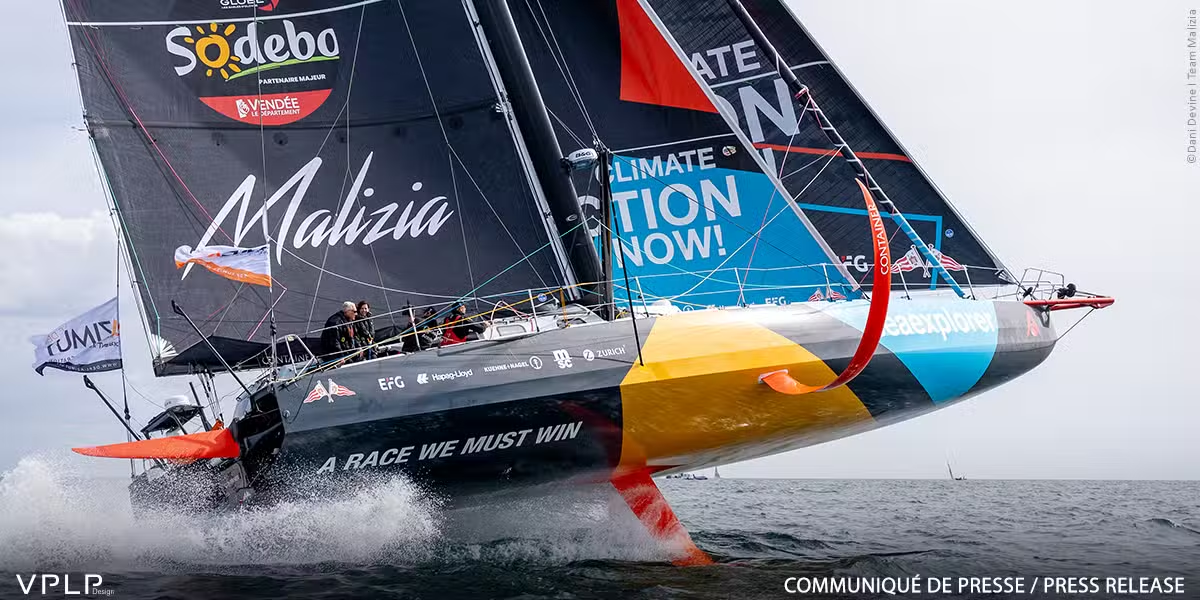
History and Objectives
The Vendée Globe was born out of the Golden Globe race of 1968, which saw the first solo non-stop circumnavigation of the globe.
The first Golden Globe Race, held in 1968-1969, was won by Sir Robin Knox-Johnston. He completed the solo, non-stop circumnavigation of the globe aboard his 32-foot Bermudan ketch, Suhaili, becoming the first person to achieve this feat145.
Interesting Aspects of the First Race
- Diverse Entrants: The race featured nine sailors with varying levels of experience and a wide range of yachts, from traditional designs to modern trimarans1.
- Challenges and Tragedies: The race was marked by numerous challenges. Donald Crowhurst tragically committed suicide after attempting to fake his journey, and Nigel Tetley’s trimaran sank while he was leading14.
- Unique Outcomes: Bernard Moitessier, a strong contender, chose to continue sailing to Tahiti instead of finishing the race, citing a desire to “save his soul” from commercial pressures14.
- Legacy: The race inspired future solo circumnavigation events like the BOC Challenge and Vendée Globe, cementing its place in sailing history1.
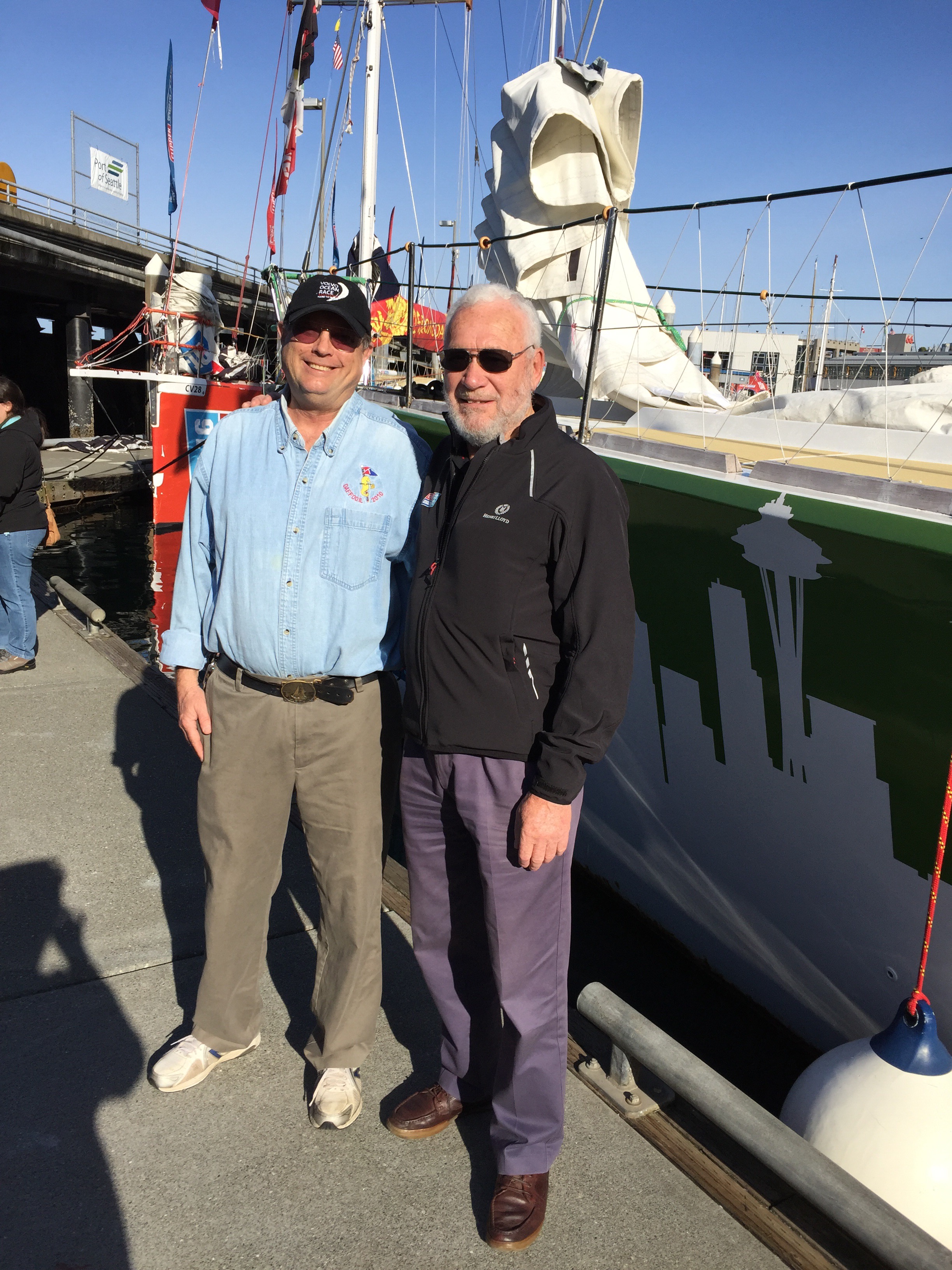
Twenty years later, in 1989, French sailor Philippe Jeantot introduced the idea of a new non-stop round-the-world race, and thus the Vendée Globe was born1.The race’s primary objectives are:
- To challenge sailors in a solo, non-stop, unassisted circumnavigation of the globe
- To test the limits of human endurance and sailing skill
- To promote technological advancements in sailing and boat design
The Vendée Globe is often referred to as the “Everest of the Seas” due to its extreme difficulty. Out of 200 contenders who have taken the start across nine editions, only 114 have managed to cross the finish line, highlighting the race’s grueling nature1.
Frequency and Course
The Vendée Globe is held every four years. The race starts and finishes in Les Sables d’Olonne, France. Sailors cover approximately 45,000 kilometers (24,300 nautical miles), following a course that takes them:
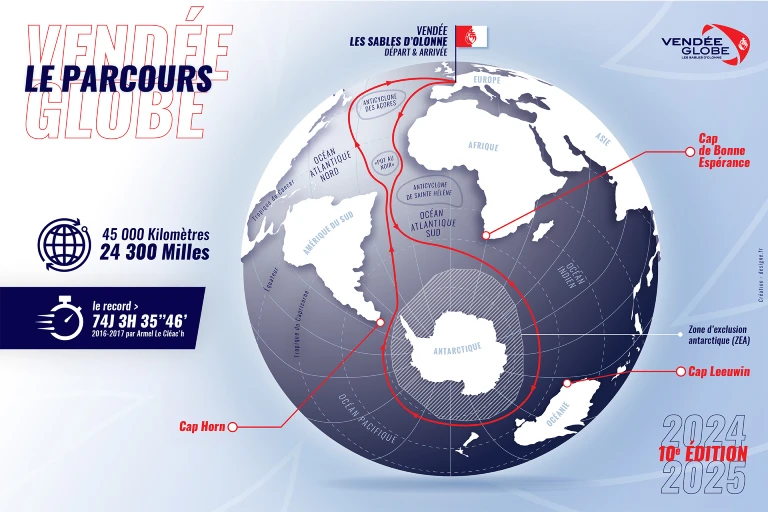
- Down the Atlantic Ocean
- Around the Cape of Good Hope
- Across the Indian and Pacific Oceans
- Around Cape Horn
- Back up the Atlantic to France
The current record for completing the course stands at 74 days and 3 hours, set during the 2016-2017 edition1.
Vendée Globe 2024
The Vendée Globe 2024-2025, the 10th edition of this legendary solo round-the-world sailing race, has captured the attention of sailing enthusiasts worldwide with its record-breaking 40-strong field and intense competition. The race, which began on November 10, 2024, from Les Sables d’Olonne, France, has already seen remarkable performances and dramatic moments. 14 out of 40 starters hail from outside France. This diversity showcases the race’s growing global appeal4.
- Boris Herrmann (Germany) – Malizia-Seaexplorer
- Aiming to be the first non-French winner of the Vendée Globe
- One of the top contenders in the foiling boat category
- Sam Davies (Great Britain) – Initiatives-Coeur
- Szabolcs Weöres (Hungary) – New Europe
- Sailing a 2012-vintage Owen Clarke-designed boat
- Second Hungarian to participate in the Vendée Globe
- Mentored by Nándor Fa, one of the first non-French sailors to complete the race
- Alan Roura (Switzerland) – Hublot
- At 31, preparing for his third Vendée Globe
- Sailing a modified version of the former Hugo Boss boat
- Focused on enjoying the race while remaining competitive
- Giancarlo Pedote (Italy) – Prysmian
- Finished 8th in the previous edition
- His boat has undergone significant modifications, including a new bow and new foils
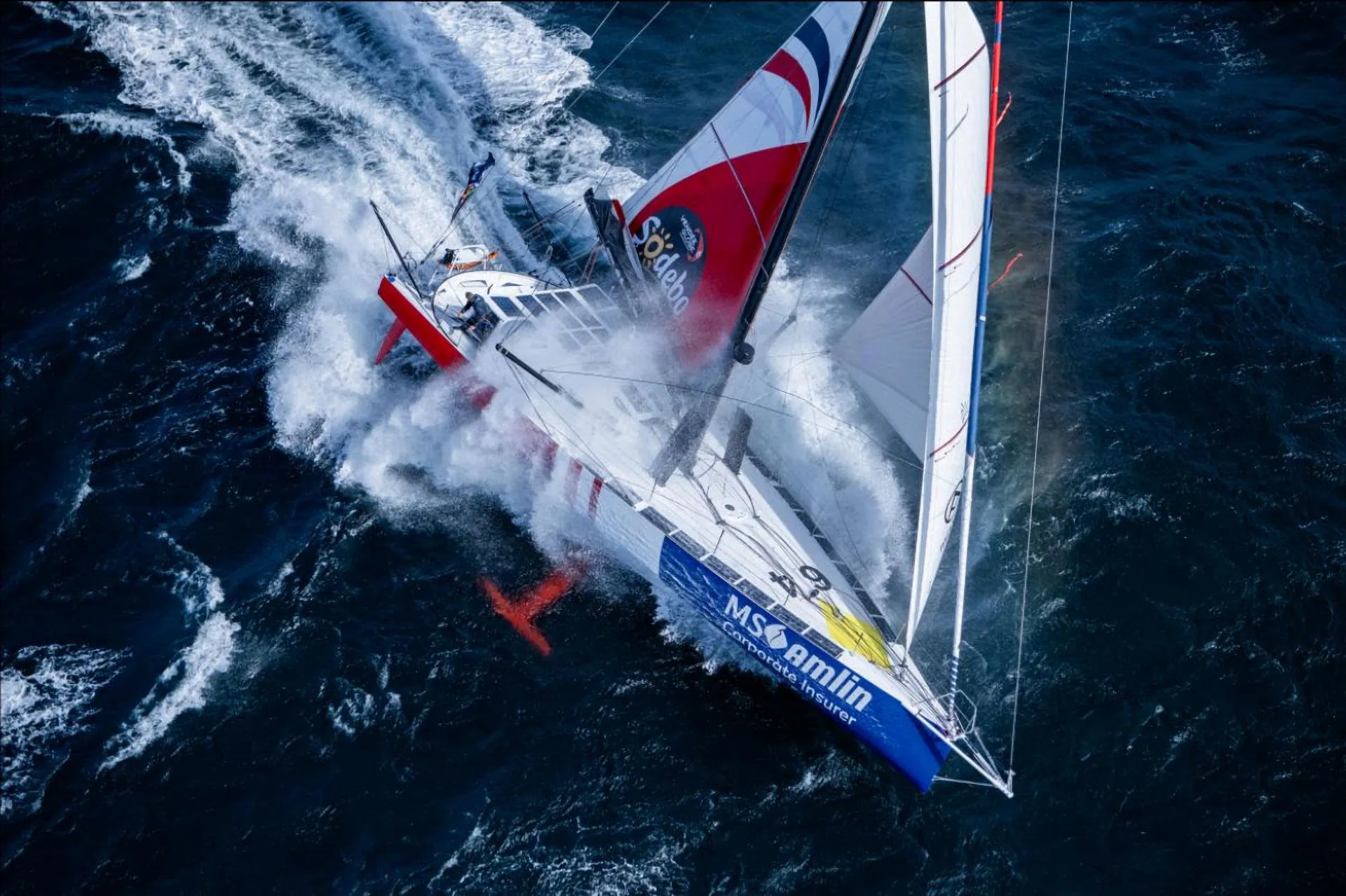
Details about a few more participants:
Charlie Dalin – MACIF Santé Prévoyance
Dalin, the 40-year-old French skipper, is considered a top favorite. His new Guillaume Verdier-designed foiler has shown impressive speed, winning the New York Vendée-Les Sables d’Olonne race earlier this year2.
Jérémie Beyou – Charal
At 48, Beyou is on his fifth consecutive Vendée Globe campaign. His new Sam Manuard-designed boat, optimized with input from Franck Cammas, is a technological marvel aiming for the top spot23.
Boris Herrmann – Malizia-Seaexplorer
The 43-year-old German skipper has been a standout performer in recent races. His VPLP foiler, which finished third in The Ocean Race, has proven its capability in Southern Ocean conditions2.
Thomas Ruyant – VULNERABLE
Ruyant has been impressive since the last edition, winning two Transat Jacques Vabre races and the Route du Rhum. He believes he has a boat capable of winning the Vendée Globe3.
Yoann Richomme – PAPREC ARKÉA
A newcomer to the Vendée Globe, Richomme has already won two transatlantic races in IMOCA. His boat is a close sister ship to VULNERABLE3.
Sam Goodchild – IMOCA Globe Series Champion
The British skipper took over Thomas Ruyant’s former boat and has already scored two podium finishes in major races3.
Sam Davies – Initiatives-Cœur
In her fourth Vendée Globe, Davies aims to improve on her previous best finish of fourth place. Her new Sam Manuard-designed boat has shown competitive speed23.
Sébastien Simon – Holcim-PRB
Simon sails the Verdier-designed boat that won The Ocean Race. He has been setting impressive 24-hour distance records during the race4.
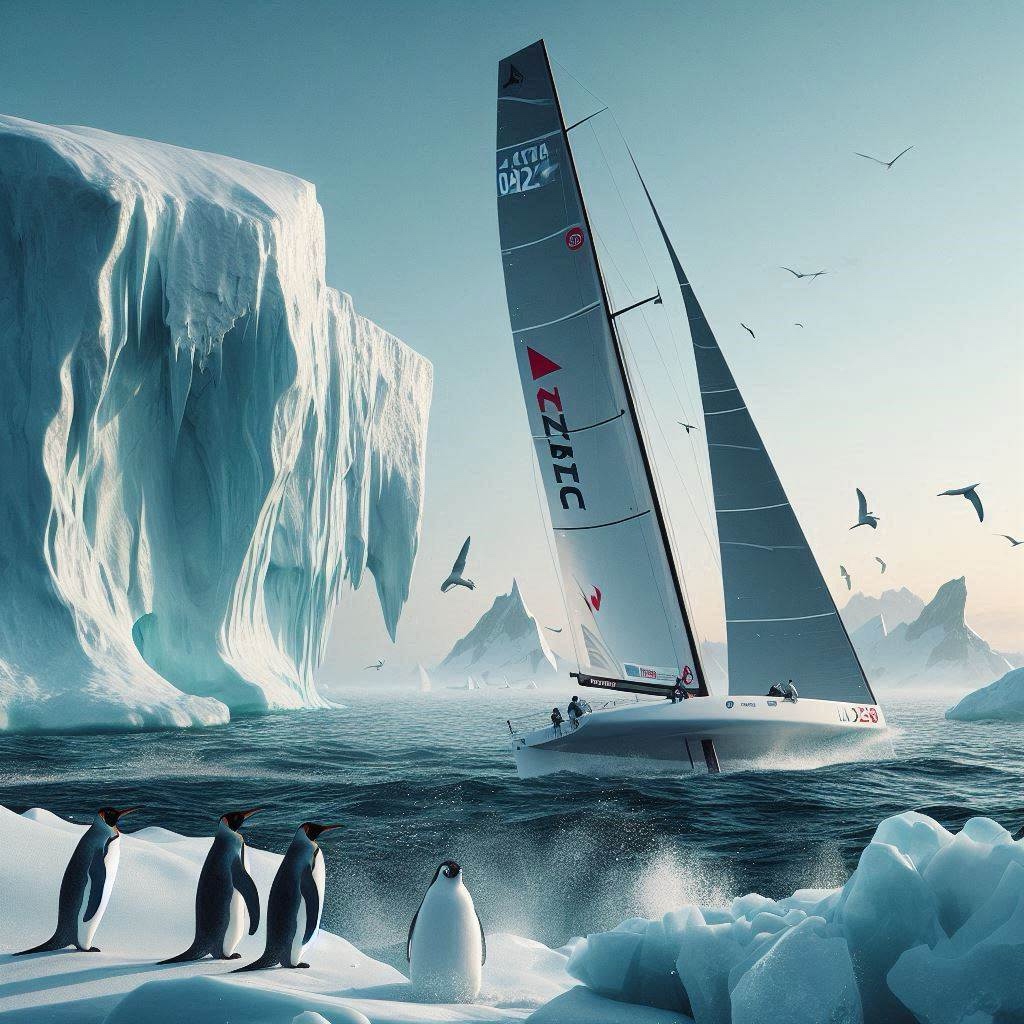
The 2024 edition features a mix of newer foiling boats and older, modified vessels. Many skippers have made significant upgrades to their boats to remain competitive, even if they’re not sailing the latest designs34.This Vendée Globe promises to be an exciting and diverse race, showcasing the best of solo ocean racing and pushing the boundaries of sailing technology and human endurance.
The Vendée Globe has seen significant technological advancements in boat design and equipment over the years, particularly in recent editions. Here are some key innovations:
Foils
One of the most dramatic advancements has been the development of foils:
- In the 2016-2017 edition, only 7 out of 29 boats had foils, while in 2020-2021, 17 out of 33 boats were equipped with them12. Most new IMOCAs are equipped with more efficient foils, enabling speeds of 25-35 knots. These designs prioritize lifting the hull out of the water for reduced drag and higher speeds13.
- The foils have grown significantly larger, with surface areas up to three times larger than the “chicken wings” used in 20161.
- New generation foils can lift the hulls to “fly” in as little as 12 knots of wind1.
- The IMOCA class now allows foils to rotate up to 5 degrees in the horizontal plane, improving upwind performance12.
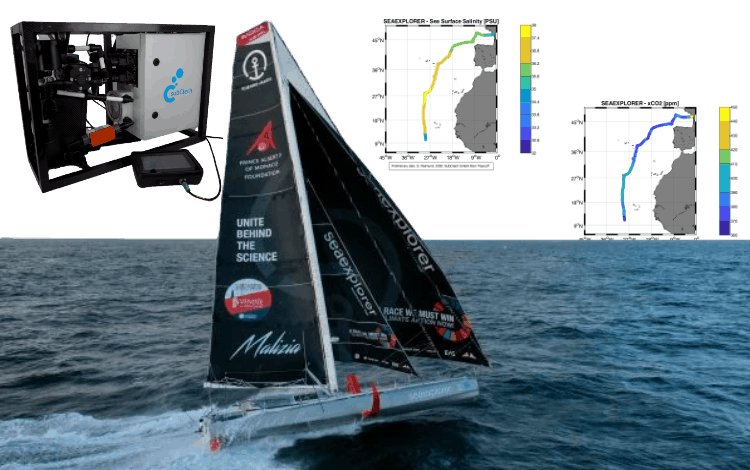
Data and Sensors
Boats are now equipped with advanced data collection and processing systems:
- Fiber optic sensors measure dynamic loads, foil deformations, and hull slamming in real-time1.
- This data allows skippers to maintain high average speeds while staying within accurately measured limits1.
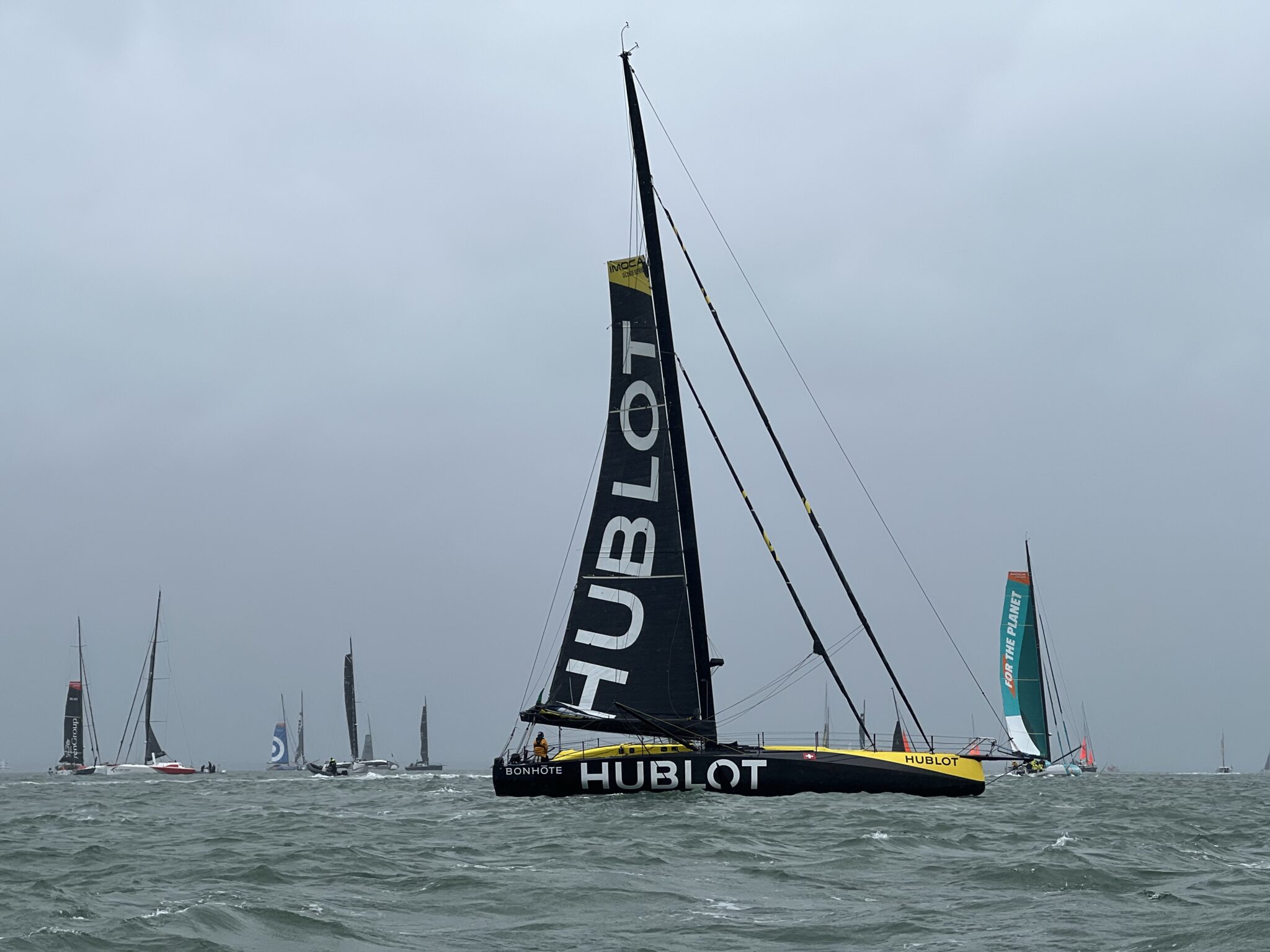
Autopilots and Artificial Intelligence
Autopilot systems have made significant leaps:
- They now process data from multiple sensors 25 times per second, including anemometers, compasses, gyros, and load sensors2.
- Advanced algorithms allow autopilots to make complex course corrections faster than human skippers, keeping boats foiling for longer periods2.
- Some boats, like Boris Herrmann’s, have integrated collision avoidance systems that can initiate evasive maneuvers automatically2.
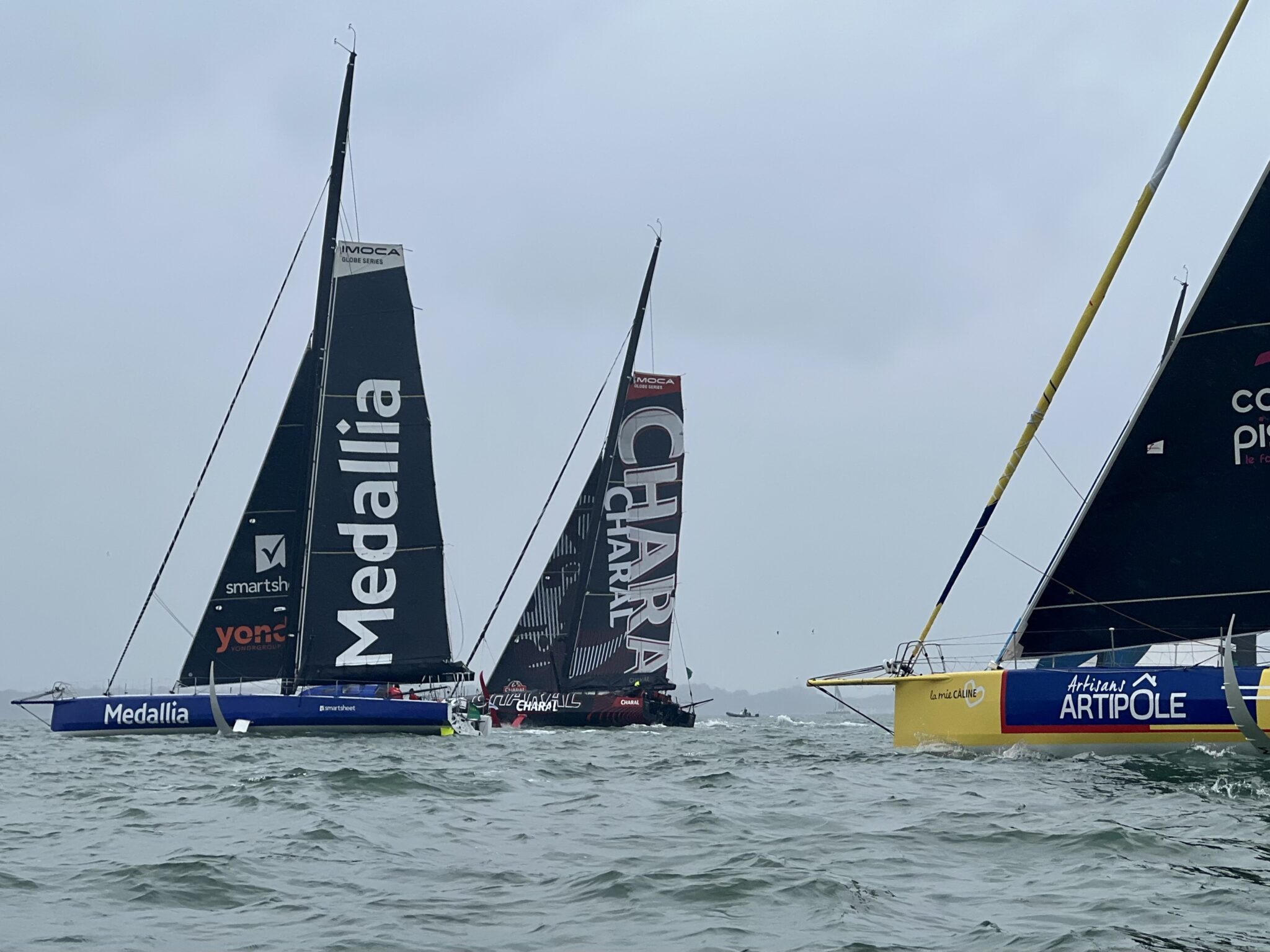
The new Charal has some pretty radical features. She has significant volume in the bow, as with many other IMOCA 60 launches trending towards more scow-like bows. But where she is truly radical is in the rudder assembly, with the twin rudders in an inverted ‘v’ shape.
In theory this should help with the boat’s stability while foiling. See Yachting World Jeremie Beyou and Franck Cammas are on Charal
Cockpit Ergonomics:
Skippers now have enclosed, padded “cockpit chairs” to reduce physical strain and improve safety during long periods of high-speed sailing. These allow for centralized navigation and control1.
Hydropower Systems:
Boats are increasingly using hydro-generators for sustainable energy, reducing reliance on traditional power sources1.
Hydropower systems in the Vendée Globe 2024 are typically mounted on the transom of the IMOCA 60 yachts. They use a small propeller submerged in water to generate electricity as the boat moves, converting kinetic energy into electrical power. These systems are particularly effective during long crossings, as they generate power continuously at speeds as low as 3 knots458.Hydrogenerators do not fully replace solar panels but complement them. Solar panels are still used for additional power, especially during calm conditions or at anchor. However, hydrogenerators are more reliable during ocean racing, as they are not dependent on sunlight or weather conditions248.
Camera Systems:
Lightweight, compact cameras provide skippers with a 360-degree view, enhancing safety and situational awareness in extreme conditions1.
Hull and Structure Design
Boat designs have evolved to handle increased speeds and loads:
- Hull structures have been reinforced to withstand the forces generated by larger foils2.
- Some boats now feature “scow” bow designs, optimized for foiling rather than traditional water line length considerations5. Designed to avoid burying into waves when foiling, this innovation minimizes decelerations and improves stability during high-speed sailing13.
- Carbon fiber laminates in highly stressed areas are now made from almost twice as many layers, but each layer is only half as thick, improving strength and reducing weight2.
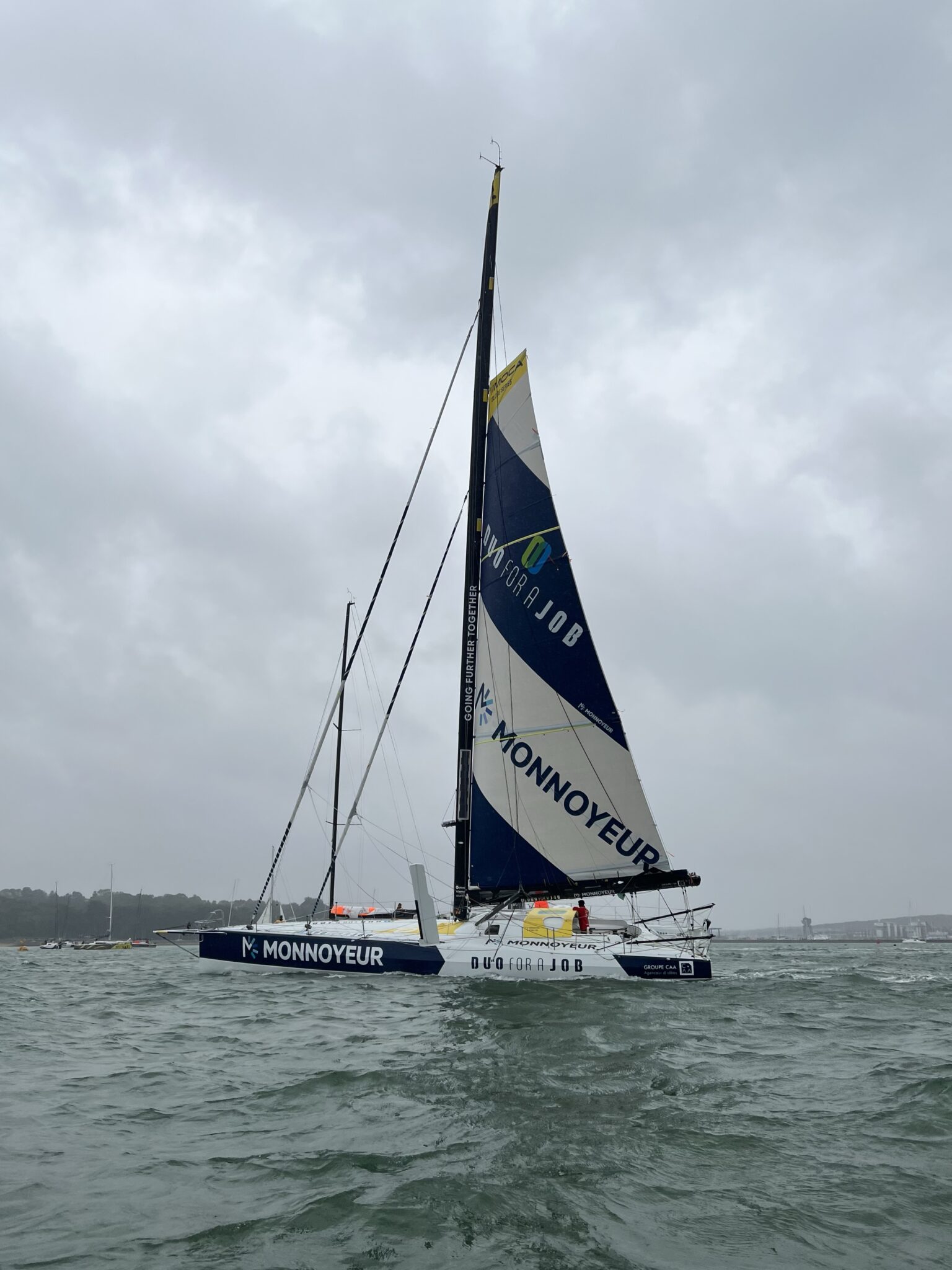
Older boats have undergone significant upgrades, including redesigned bows, keels, and ballast systems to compete with newer builds4.
Safety and Communication Systems
Advancements have also been made in safety and communication:
- Two-thirds of the IMOCA fleet in the 2020-2021 race used the Oscar camera system for improved obstacle detection2.
- Satellite communication systems have improved, allowing for better data transmission and weather routing4.
These technological advancements have not only improved performance and safety in the Vendée Globe but have also found applications in other maritime sectors, including commercial shipping, wind power, and industrial automation34.
The IMOCA (International Monohull Open Class Association) 60 is a highly advanced racing yacht designed for solo and double-handed offshore racing. Here are some key features of the IMOCA boat design:

Hull Design
- Length: 59-60 feet (18 m)
- Maximum beam: 5.85 meters
- Maximum draft: 4.5 meters
- Wide hull for stability in rough sea states
- Some newer designs feature “scow” bows to reduce nose-diving and improve performance in heavy seas1
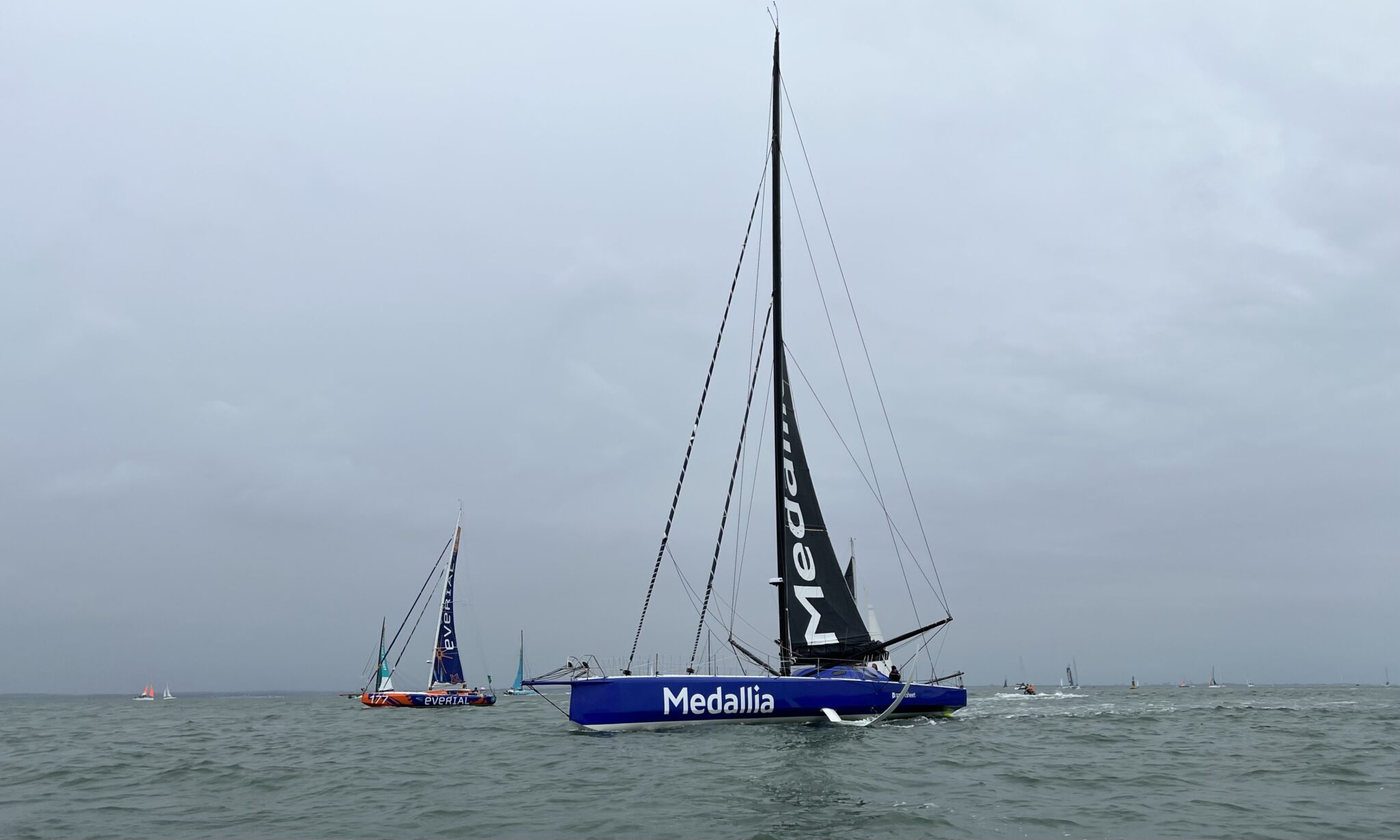
However, development has moved on significantly since the boat was launched but Medallia has just undergone a substantial refit with new, bigger foils added requiring significant structural alterations and the bow has been reworked into a more modern, higher volume configuration too.” See Yachting World
Foils and Keel
- Equipped with foils that can lift the hull in as little as 12 knots of wind
- Canting keel for improved stability and performance
- The keel ram and fin are one-design components for safety reasons1
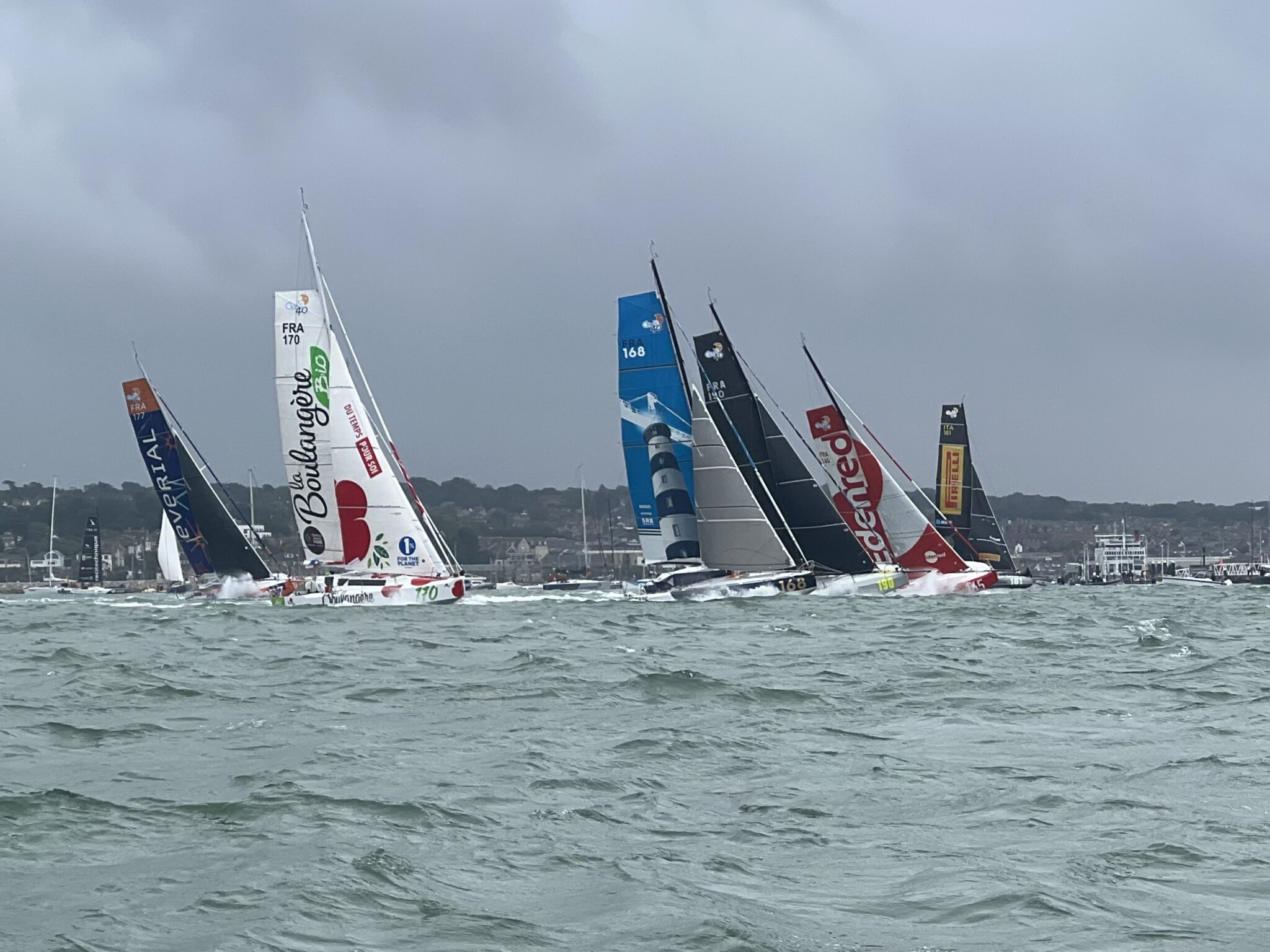
Cockpit and Safety Features
- Trend towards more protected work areas, with some boats featuring fully enclosed cockpits
- Self-righting capability is mandatory, with each boat required to pass a 90 or 180-degree test1
Rigging
- Rotating mast with about 180 m² of sail area
- Fully battened mainsail with adjustable area
- Multiple attachment points for headsails
- Limited number of headsails allowed in races1
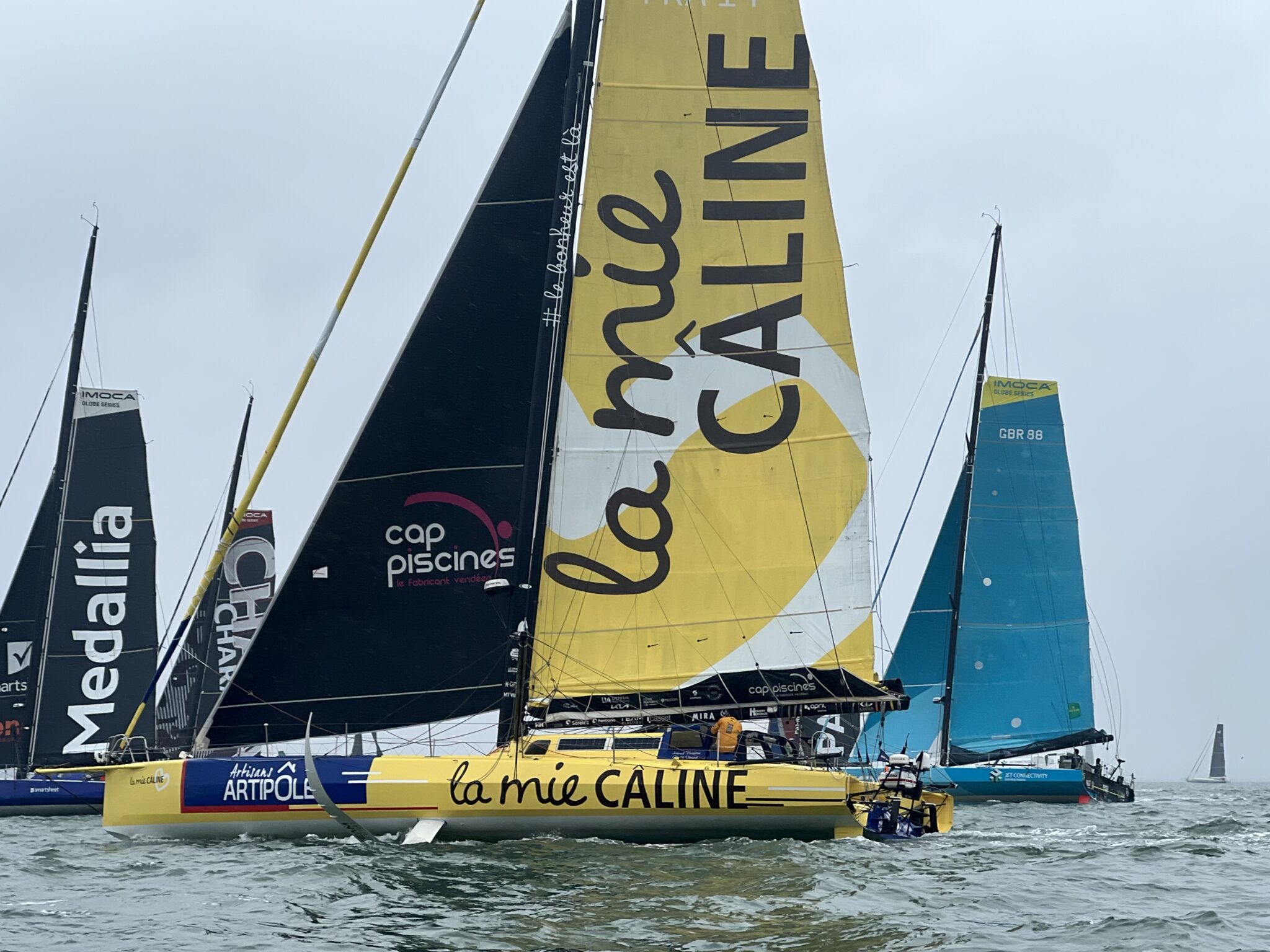
Autopilot and Technology
- Advanced autopilot systems that process data from multiple sensors
- Obstacle avoidance systems like OSCAR for detecting floating objects
- Fiber optic sensors to measure dynamic loads and deformations1
Regarding the IMOCA boats that participated in the Fastnet Race, while I don’t have a complete list, the search results provide some information:
- Charlie Dalin’s new boat MACIF participated in the 2023 Fastnet Race. Dalin was the outright IMOCA class winner in the 2021 edition3.
- The race featured “lead flying IMOCAs” which created a dramatic spectacle as they “literally flew upwind in the brisk conditions”3.
- While not specifically mentioned for the 2023 race, the search results indicate that IMOCA 60s have been regular participants in previous Fastnet Races2.
It’s worth noting that the Fastnet Race attracts a diverse fleet of boats across various classes, including IMOCAs, Class40s, and larger multihulls like Ultim trimarans. The 2023 edition saw a record-breaking 430 yachts participating, showcasing the race’s popularity and the continued development of offshore racing technology3.
The self-righting capability in IMOCA 60 yachts is a critical safety feature designed to ensure that these boats can recover from a capsize.
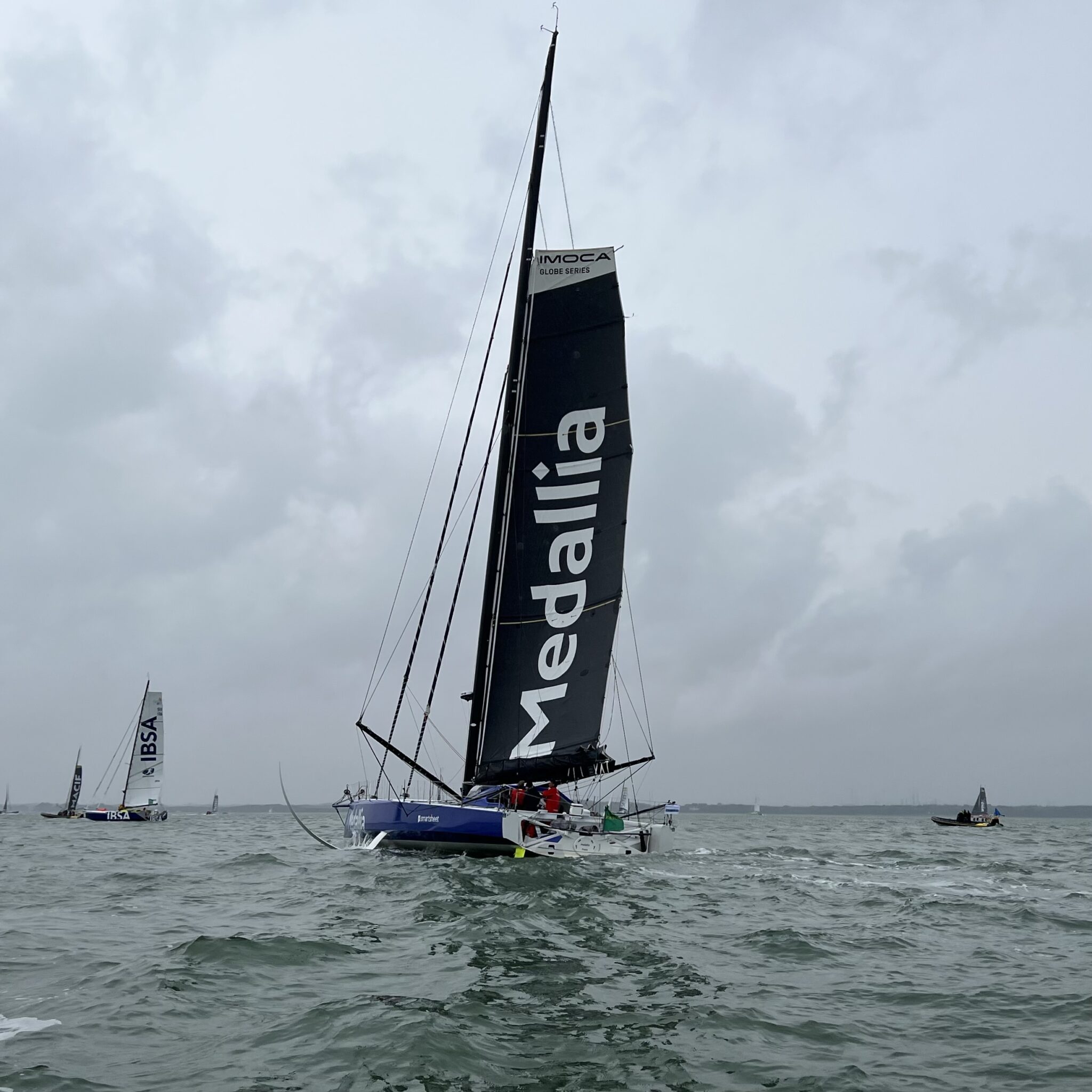
Here’s how it works:
Self-Righting Mechanism
- Keel Design: The IMOCA 60s are equipped with a canting keel, which can be moved to one side to provide the necessary leverage to right the boat if it capsizes45.
- Ballast and Stability: The keel’s weight and its ability to cant help lower the boat’s center of gravity, providing stability and aiding in self-righting. The design ensures that even if the boat is inverted, the keel’s position will naturally help it return to an upright position5.
- Testing Requirements: Each IMOCA 60 must pass a 180-degree self-righting test as part of its certification. This involves simulating a capsize with the keel fully canted to one side, ensuring that the boat can return to an upright position without external assistance4.
These features are crucial for the safety of solo sailors, especially in challenging offshore conditions like those encountered in races such as the Vendée Globe. These advancements are expected to break the 2017 race record of 74 days as skippers balance speed with reliability23.

In the Vendée Globe 2024, the youngest skipper is Violette Dorange, who is 23 years old12. The oldest skipper is Jean Le Cam, who is 65 years old13. The average age of the skippers in this edition is not explicitly stated in the search results, but the range from 23 to 65 suggests a diverse age group.
Women Captains in Vendée Globe 2024:
- Violette Dorange – France, DeVenir
- Sam Davies – Great Britain, Initiatives-Coeur 4
- Isabelle Joschke – Franco-German, MACSF
- Pip Hare – Great Britain, Medallia
- Clarisse Crémer – France, L’Occitane En Provence
- Justine Mettraux – Switzerland, Teamwork-Team SNEF24.
The Vendée Globe 2024 features a diverse lineup of skippers from multiple countries, supported by various sponsors.
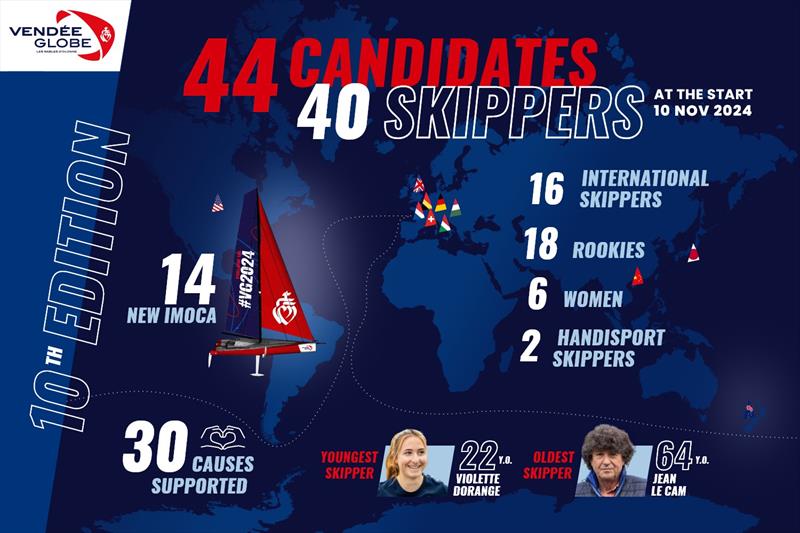
Here is an overview:
Countries Represented
Sponsors
While specific sponsors for each skipper are not detailed in the search results, some known sponsors include:
- Malizia-Seaexplorer for Boris Herrmann (Germany)
- Initiatives-Coeur for Sam Davies (Great Britain)
- Hublot for Alan Roura (Switzerland)
- DMG Mori Global One for Kojiro Shiraishi (Japan)12.
The race showcases a strong international presence, with 14 out of 40 skippers coming from outside France12.
In the Vendée Globe 2024, the United States is represented by skipper Alexia Barrier.
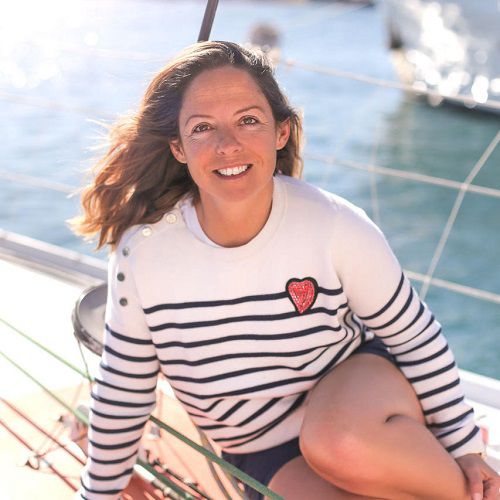
Here is a brief biographical sketch:
Alexia Barrier
- Nationality: United States
- Background: Alexia Barrier is an experienced sailor with a strong background in offshore racing. She has previously competed in various international sailing events and is known for her resilience and dedication to the sport.
- Vendée Globe Experience: Although she has participated in other significant ocean races, the 2024 edition marks her first Vendée Globe attempt.
- Sponsorship and Boat: Details about her specific sponsors and boat for the 2024 race are not explicitly mentioned in the search results.
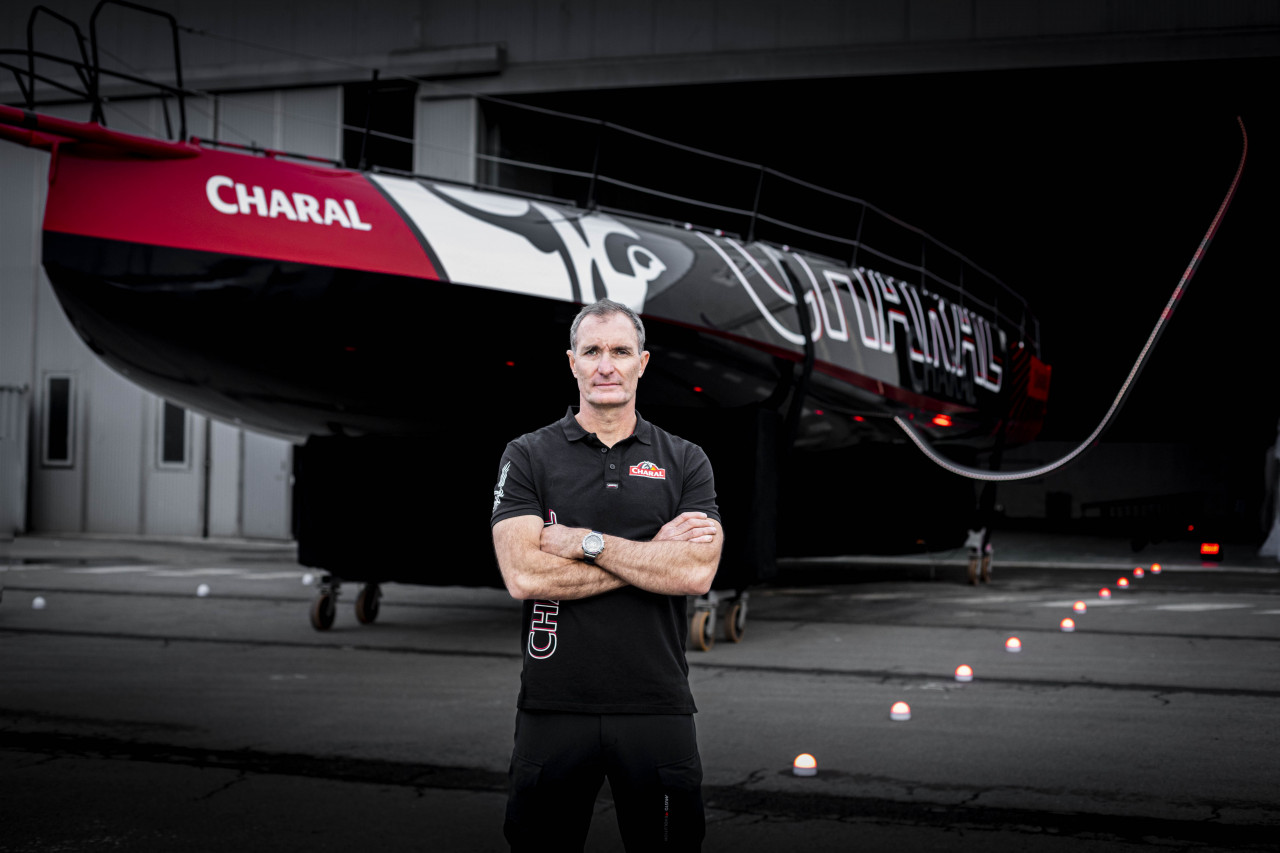
Alexia Barrier’s participation highlights the growing international diversity of the Vendée Globe, as she joins a competitive field of 40 skippers from 11 different nationalities.
Jérémie Beyou’s extensive experience in previous Vendée Globe races has significantly influenced his approach to the 2024 edition. Having participated in four Vendée Globes and finishing twice, including a third-place podium finish, Beyou has gained valuable insights into solo ocean racing12. His determination to win the race remains strong, as evidenced by his return despite setbacks in previous editions, such as technical issues that forced him to restart nine days late in the last race3.
Beyou’s experience has taught him patience and self-motivation, especially during challenging times when he had to race alone for extended periods23. He has learned to balance competitive spirit with personal growth, discovering new aspects of racing and enjoying the journey rather than solely focusing on the outcome4.
For the 2024 race, Beyou is equipped with a new IMOCA boat, Charal 2, featuring advanced design elements like a scow bow for improved performance1. His approach combines his competitive drive with lessons learned from past experiences, aiming to leverage both his skills and technological advancements to achieve victory.
Number of Vessels: The Vendée Globe 2024 features a fleet of 40 IMOCA 60 yachts, showcasing a mix of older designs and new-generation foilers with cutting-edge enhancements.
IMOCA 60
Description:
• Length: 18.28 meters (60 feet)
• Beam: Up to 5.85 meters
• Draught: 4.5 meters
• Design: These are high-performance monohulls designed for solo offshore racing. They feature advanced technology, including foils that lift the hull to reduce drag and increase speed.
• Sail Area: Large sail areas allow these boats to reach speeds over 30 knots in downwind conditions.
• Construction: Built using lightweight composite materials for strength and speed.
These boats are known for their power and technological sophistication, making them ideal for the demanding conditions of the Vendée Globe.
The race has seen intense competition and record-breaking performances. As of December 23, 2024, the leading boats are approaching Cape Horn, marking a crucial milestone in the race5.
Week 1-6 Leaders (November 10 – December 23, 2024)
- Yoann Richomme (PAPREC ARKÉA)
- Charlie Dalin (MACIF Santé Prévoyance)
- Jérémie Beyou (Charal)
- Thomas Ruyant (VULNERABLE)
- Boris Herrmann (Malizia-Seaexplorer)
Notable Developments
- Record-Breaking Speeds: Several boats have surpassed the 560 nautical miles per day mark, with Sébastien Simon setting a new solo 24-hour distance record of 628.37 nautical miles4.
- Cape Horn Challenge: Yoann Richomme and Charlie Dalin are expected to round Cape Horn around 2300 UTC on December 23, 2024, potentially setting new records5.
- Technological Innovations: The latest IMOCA 60 designs are pushing the boundaries of sailing technology, with advanced foiling systems and optimized hulls contributing to the incredible speeds6.
- Challenging Conditions: The fleet has faced varying conditions, from the intense speeds in the South Atlantic to the more challenging Southern Ocean4.
- Close Competition: The race remains tight among the leaders, with strategic decisions around weather systems and routing playing a crucial role3.
As the Vendée Globe 2024-2025 continues, the sailing world watches in anticipation to see who will emerge victorious in this grueling test of skill, technology, and human endurance. With over half the race still to go, anything can happen in the unpredictable waters of the Southern Ocean and beyond.


